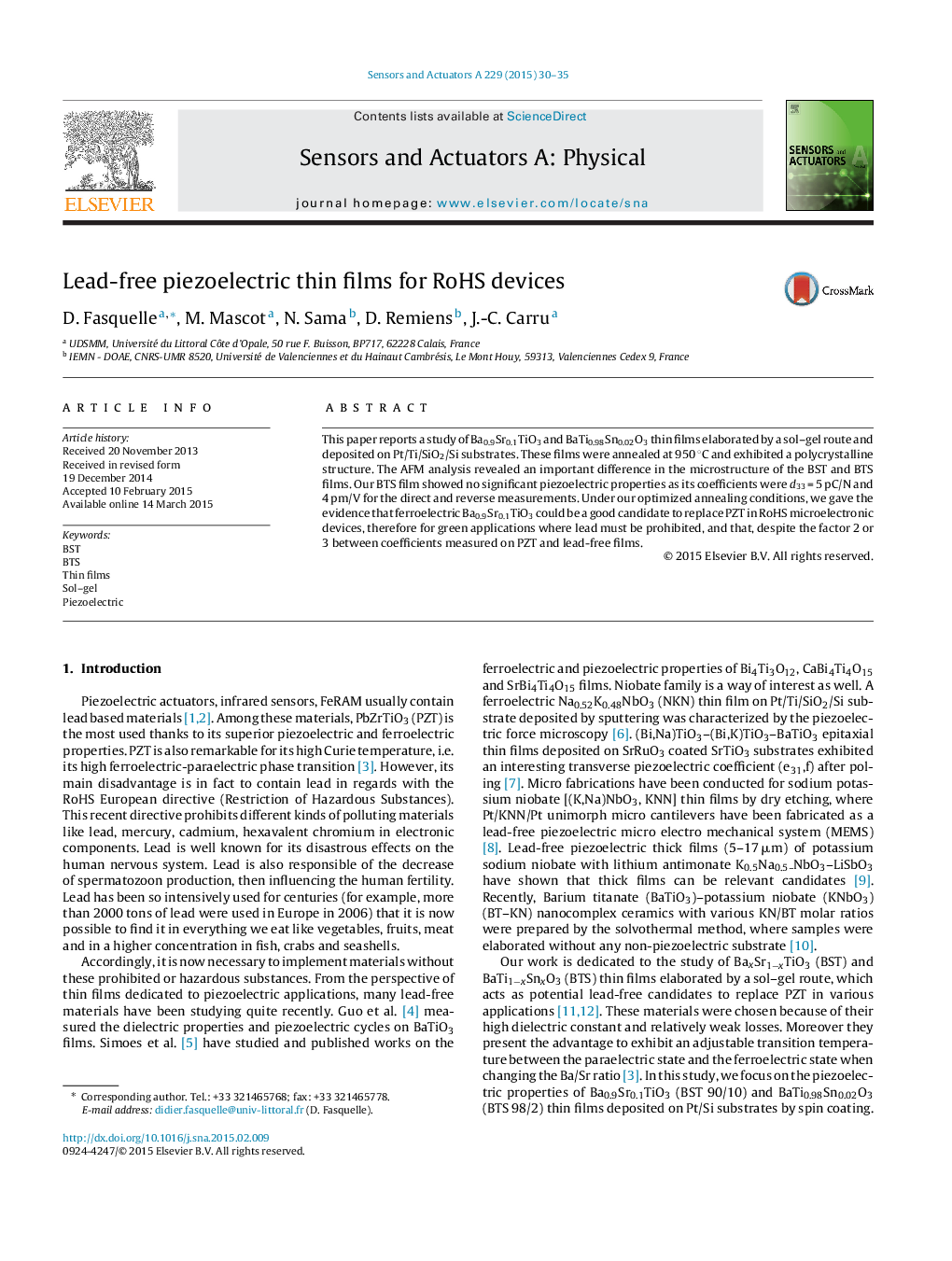| کد مقاله | کد نشریه | سال انتشار | مقاله انگلیسی | نسخه تمام متن |
|---|---|---|---|---|
| 736185 | 1461871 | 2015 | 6 صفحه PDF | دانلود رایگان |

• In regards with the RoHS European directive (Restriction of Hazardous Substances), there is a need for lead-free materials dedicated to electronics, sensors and microactuators. So this paper presents a study of Ba0.9Sr0.1TiO3 and BaTi0.98Sn0.02O3 thin films elaborated by a Sol–Gel route and deposited on Pt/Ti/SiO2/Si substrates.
• Due to its non-significant piezoelectric properties (d33 =5 pm/V), BTS cannot be considered as a potential candidate for piezoelectric applications. And we show here that this is due to its microstructure.
• Under our optimized annealing conditions (950 °C for 15 min), we gave the evidence that ferroelectric Ba0.9Sr0.1TiO3 is a real challenger to replace PZT in RoHS various applications. Indeed, as the piezoelectric properties measured on our thin film (d33 = 21 pm/V, converse measurement) were particularly significant, we assume that Ba0.9Sr0.1TiO3 films may be used in microelectronic devices, especially for green applications where lead must prohibited.
• To compare the piezoelectric properties of our BST and BTS films in a very efficient way, the same measurement was conducted on a Sol–Gel PZT film. Indeed, films elaborated by different techniques show very different properties (physical and electrical properties) and therefore we have chosen to study here only sol–gel films.
This paper reports a study of Ba0.9Sr0.1TiO3 and BaTi0.98Sn0.02O3 thin films elaborated by a sol–gel route and deposited on Pt/Ti/SiO2/Si substrates. These films were annealed at 950 °C and exhibited a polycrystalline structure. The AFM analysis revealed an important difference in the microstructure of the BST and BTS films. Our BTS film showed no significant piezoelectric properties as its coefficients were d33 = 5 pC/N and 4 pm/V for the direct and reverse measurements. Under our optimized annealing conditions, we gave the evidence that ferroelectric Ba0.9Sr0.1TiO3 could be a good candidate to replace PZT in RoHS microelectronic devices, therefore for green applications where lead must be prohibited, and that, despite the factor 2 or 3 between coefficients measured on PZT and lead-free films.
Journal: Sensors and Actuators A: Physical - Volume 229, 15 June 2015, Pages 30–35